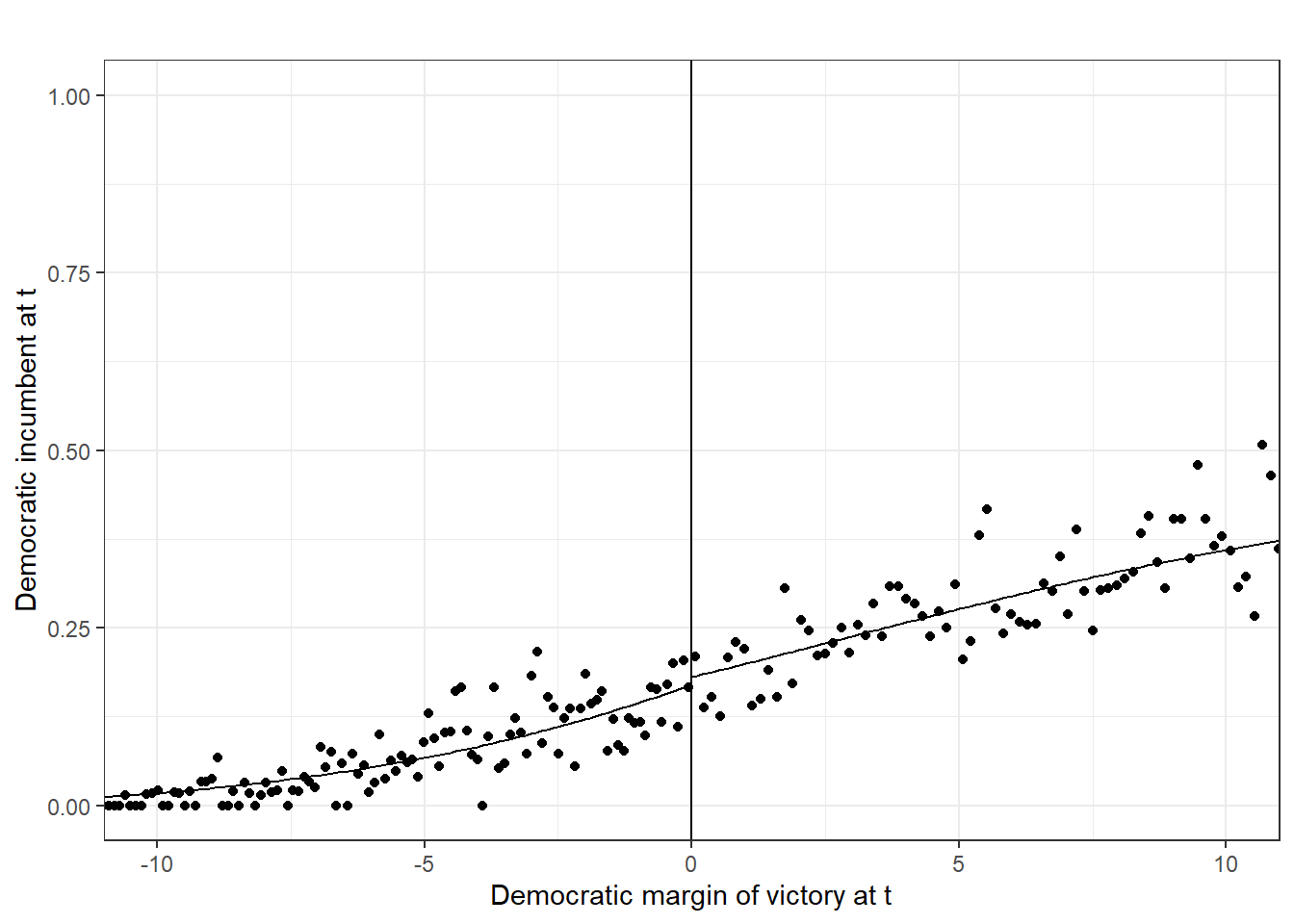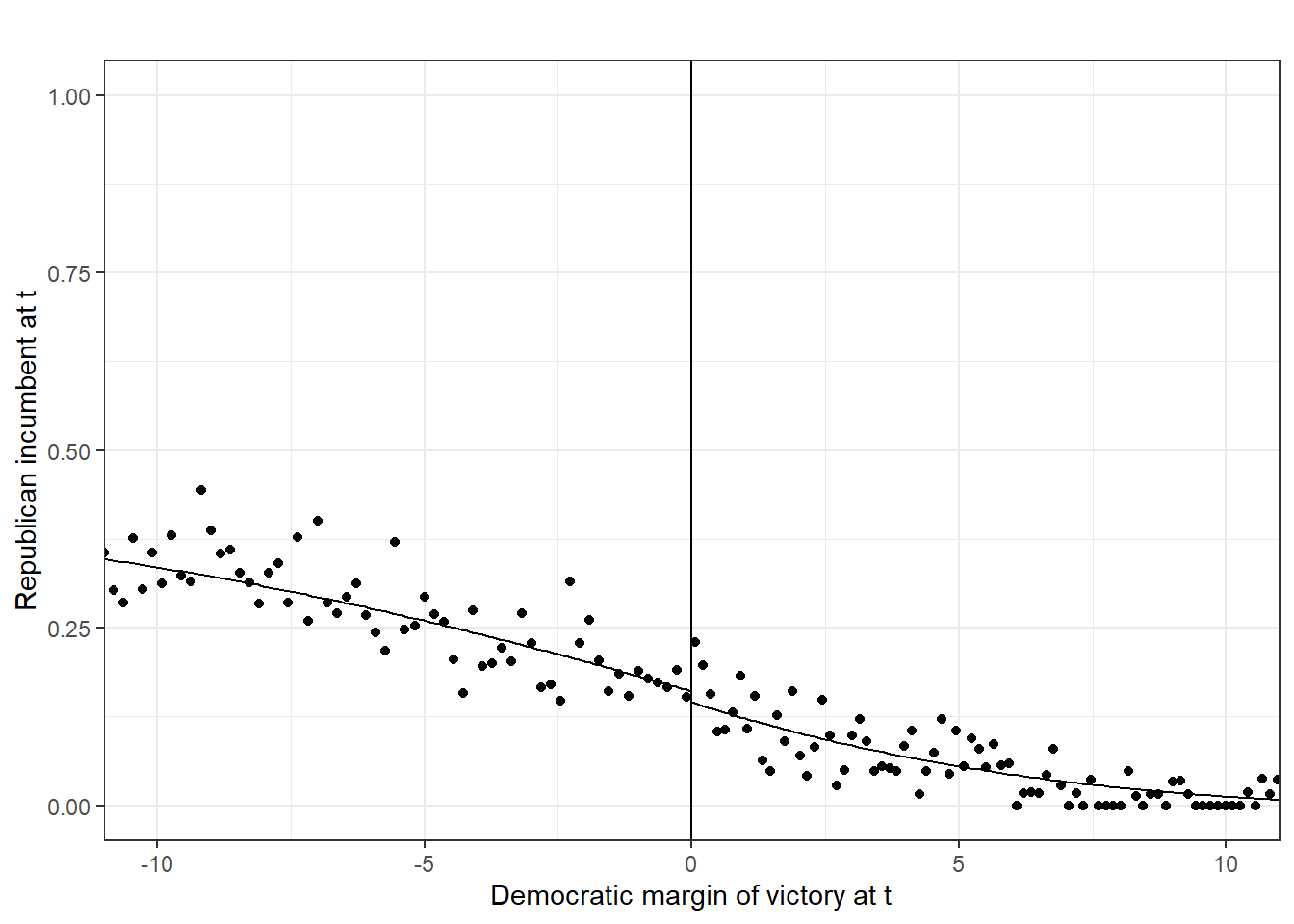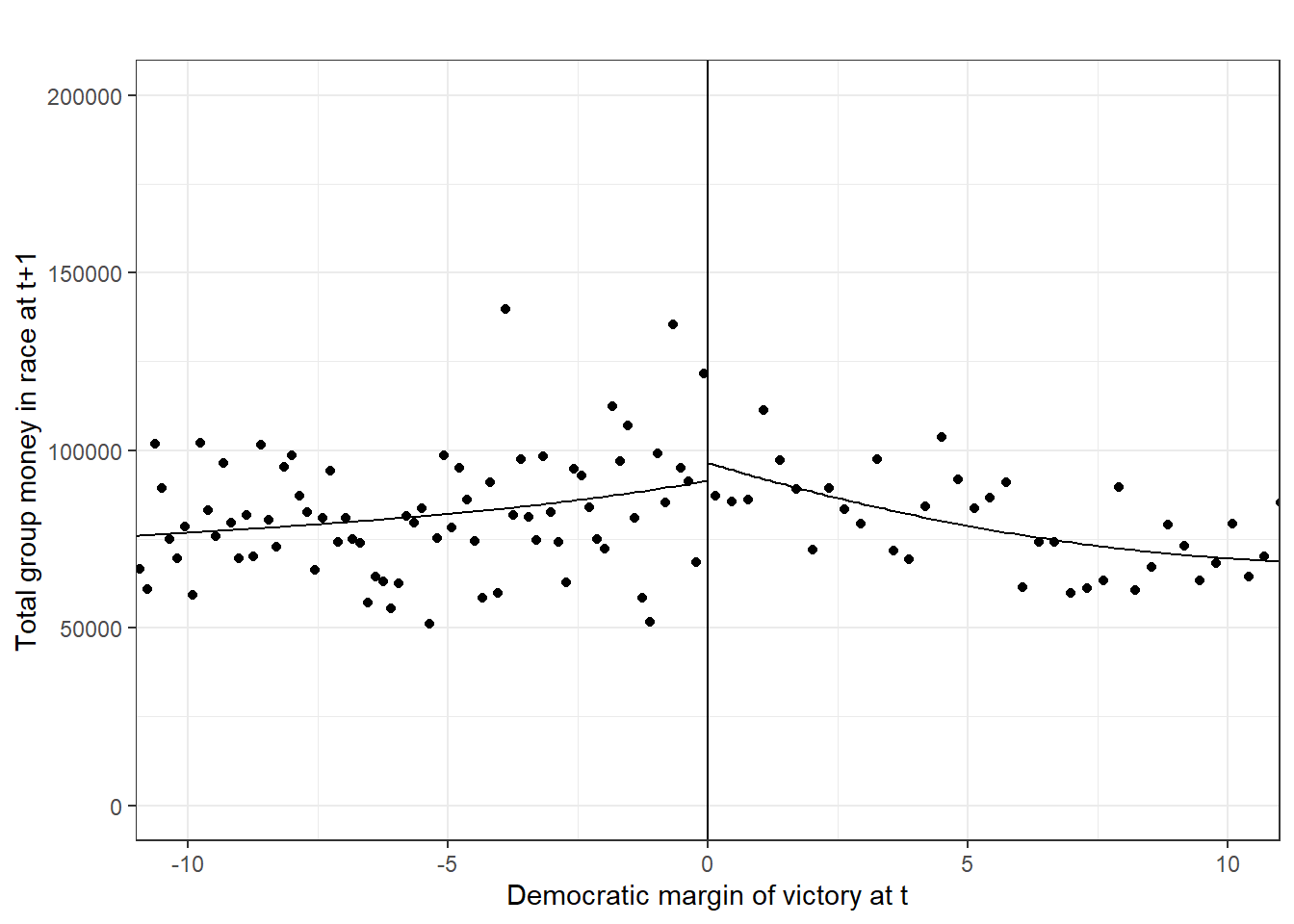13.12 Exercise
- Above (see Table 1) we used a series of falsification tests. Among other things we checked whether there is an effect of the treatment on pre-treatment covariates that should be unaffected. We did so for “Total money in race” and “Total votes in race”. Do the same for the other covariates namely “Democratic incumbent”, “Republican incumbent” and “Total group money”.
## [1] "Mass points detected in the running variable."
## Call: rdrobust
##
## Number of Obs. 32670
## BW type mserd
## Kernel Triangular
## VCE method NN
##
## Number of Obs. 16281 16389
## Eff. Number of Obs. 4016 3568
## Order est. (p) 1 1
## Order bias (q) 2 2
## BW est. (h) 7.864 7.864
## BW bias (b) 14.648 14.648
## rho (h/b) 0.537 0.537
## Unique Obs. 11187 10946
##
## =============================================================================
## Method Coef. Std. Err. z P>|z| [ 95% C.I. ]
## =============================================================================
## Conventional 0.012 0.019 0.637 0.524 [-0.025 , 0.048]
## Bias-Corrected 0.004 0.019 0.238 0.812 [-0.032 , 0.041]
## Robust 0.004 0.021 0.210 0.833 [-0.037 , 0.046]
## =============================================================================
## [1] "Mass points detected in the running variable."
## Call: rdrobust
##
## Number of Obs. 32670
## BW type mserd
## Kernel Triangular
## VCE method NN
##
## Number of Obs. 16281 16389
## Eff. Number of Obs. 3544 3183
## Order est. (p) 1 1
## Order bias (q) 2 2
## BW est. (h) 6.952 6.952
## BW bias (b) 16.320 16.320
## rho (h/b) 0.426 0.426
## Unique Obs. 11187 10946
##
## =============================================================================
## Method Coef. Std. Err. z P>|z| [ 95% C.I. ]
## =============================================================================
## Conventional -0.019 0.019 -0.995 0.320 [-0.056 , 0.018]
## Bias-Corrected -0.010 0.019 -0.533 0.594 [-0.048 , 0.027]
## Robust -0.010 0.021 -0.495 0.620 [-0.050 , 0.030]
## =============================================================================
## [1] "Mass points detected in the running variable."
## Call: rdrobust
##
## Number of Obs. 32670
## BW type mserd
## Kernel Triangular
## VCE method NN
##
## Number of Obs. 16281 16389
## Eff. Number of Obs. 6347 5384
## Order est. (p) 1 1
## Order bias (q) 2 2
## BW est. (h) 12.193 12.193
## BW bias (b) 18.917 18.917
## rho (h/b) 0.645 0.645
## Unique Obs. 11187 10946
##
## =============================================================================
## Method Coef. Std. Err. z P>|z| [ 95% C.I. ]
## =============================================================================
## Conventional 2712.823 5979.432 0.454 0.650 [-9006.649 , 14432.295]
## Bias-Corrected 3734.085 5979.432 0.624 0.532 [-7985.386 , 15453.557]
## Robust 3734.085 7157.025 0.522 0.602[-10293.425 , 17761.596]
## =============================================================================
- Reiterate why both the density test and the test using the predetermined covariates are helpful. What do they ideally show?
- Come up with three research ideas (ideally in your areay of research) that would lend themselves to apply a regression discontinuity. Think of any running variables/score that may determine whether individuals or other entities get treatments you are interested in.
- What is the “problem” of the local nature of RD effects (Skovron and Titiunik 2015, 9)?
- In what way is the functional form (of the regression functions) important in a RDD in line with/as opposed to a randomized experiment(Skovron and Titiunik 2015, 7–8)? (See also Gelman and Zelizer (2015))
- Which role does the bandwith around the score play both conceptually and in terms of estimation? (e.g. Skovron and Titiunik 2015, 14–15)
References
Gelman, Andrew, and Adam Zelizer. 2015. “Evidence on the Deleterious Impact of Sustained Use of Polynomial Regression on Causal Inference.” Research & Politics 2 (1): 2053168015569830.
Skovron, Christopher, and Rocıo Titiunik. 2015. “A Practical Guide to Regression Discontinuity Designs in Political Science.”